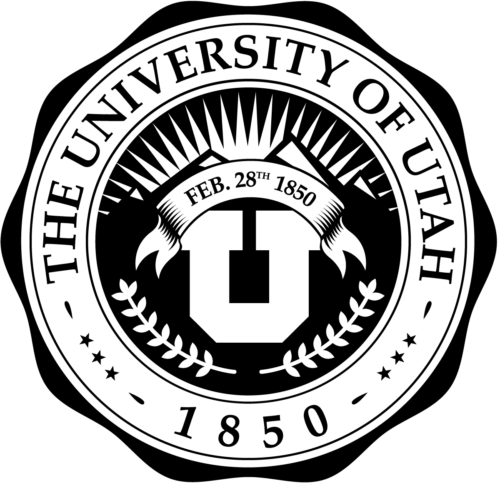Kristopher L. Cannon
Education
Georgia State University, Atlanta, 2013
Moving Image Studies Program, Department of Communication
Committee: Alessandra Raengo (Chair), Jennifer Barker, Ted Friedman, Angelo Restivo, and Steven Shaviro.
Dissertation: Oblique Optics: Seeing the Queerness of Ec-Static Images.
Abstract: Oblique Optics contends that studies of visual culture must account for the queerness of images. This argument posits images as queer residents within visual culture by asking how and where the queerness of images becomes visible. These questions are interrogated by utilizing queer theories and methods to refigure how the image is conceptualized within traditional approaches to visual culture studies and media studies. Each chapter offers different approaches to see the queerness of images by torquing our vision to see “obliquely,” whereby images are located beyond visible surfaces (like pictures or photographs) through ec-static movements within thresholds between bodies and beings.
Chapter One rethinks how images are conceptualized through metaphorical language by exploring how images emerge from fantasies about will-be-born bodies in fetal photographs. This chapter turns to figures of queer children for insight about oblique approaches to visual culture and foregrounds later engagements with aesthetics of failure. Chapter Two considers how aesthetics of failure extend to the visible forms of lacking bodies. The visibility of lack is explored by considering how pixelated vision provides alternative ways to image mastectomy scars in the film The Body Beautiful (1991) and the advertising campaign “Obsessed with Breasts.” Chapter Three addresses the visible form and function of cutting within images about Michael Jackson and these images are shown cutting the body toward non-human forms of visibility. Chapter Four expands on this discussion about the non-human by contemplating how the film Air Doll (2009) reveals a visual culture of things, where we not only see things but also see how things see. Finally, Chapter Five turns to digital glitches as a visible form to explore how non-human bodies like the computer produce images beyond human-centric concerns and reveals how the digital is shown to image itself.
M.A.
Northern Illinois University, DeKalb, 2007
Department of Communication; LGBT Studies Certificate
Committee: Robert Alan Brookey (Chair), Kelly Happe, Betty LaFrance.
B.S.
University of Utah, Salt Lake City, 2005
Gender Studies Program
Advisor: Kathryn Bond Stockton
Recent Publications
- Kristopher L. Cannon (2016). “Ec-Static Air: The Unseeable Sounds of Being Beside Oneself,” Discourse: Journal for Theoretical Studies in Media and Culture, 38.2 (Invited contribution for Dossier: “Is the Moving Image an Object?”), 265-280.
- Paul Bowman, Kristopher L. Cannon, Elena del Río, Shane Denson, Adrian Ivakhiv, Patricia MacCormack, Michael O’Rourke, Karin Sellberg, and Steven Shaviro. “Post-Cinematic Affect: A Conversation in Five Parts,” in Shane Denson & Julia Leyda (Eds.) Post-Cinema: Theorizing 21st Century Film. (Falmer: REFRAME Books, 2016): 879-932.
- Kristopher L. Cannon. (2014). “Ec-Statically Queer Images: Queering the Photographic Through Fetal Photography,” Photography and Culture, 7.3 (special issue on “queering photography”), pp. 269-284.
- Kristopher L. Cannon & Jennifer M. Barker. “Hard Candy,” in Pelle Snickars & Patrick Vonderau (Eds.) Moving Data: The iPhone and the Future of Media. (New York: Columbia University Press, 2012): 73-88.
- Kristopher L. Cannon. (2010). “Chrysanthi Nigianni and Merl Storr (2009) Deleuze and Queer Theory” [Book Review], Deleuze Studies, 4, pp. 432-436.
- Kristopher L. Cannon. (2010, Fall). “Cutting Race Otherwise: Imagining Michael Jackson.” Spectator, 30.2, pp. 28-36.
- Robert Alan Brookey & Kristopher L. Cannon (2009, June). “Sex Lives in Second Life.” Critical Studies in Media Communication, 26.2, pp. 145-164.
Recent Conference Presentations
- Kristopher L. Cannon (2017, Mar). “What Does a Gay Bar Sound Like? The Temporality of Sound in Queer as Folk.” A paper presented at the Society for Cinema and Media Studies, Chicago, IL.
- Kristopher L. Cannon (2016, Mar). “When Do #BlackLivesMatter?” A paper presented at the Society for Cinema and Media Studies, Atlanta, GA.
- Kristopher L. Cannon (2015, Mar). “The Visible Residue of Digital Relations: Rendering Ec-static Forms of Non-humans into Visibility.” A paper presented at the Society for Cinema and Media Studies, Montreal, Canada.
- Kristopher L. Cannon (2014, Feb). “Disfiguring Digital Visibility: Pixels as Figures of Ec-Static Digital Aesthetics.” A paper presented at Rendering (the) Visible II: Figure, Atlanta, GA.
- Kristopher L. Cannon (2013, Mar). “Rethinking Digital Ontology Through Aesthetics of Failure.” A paper presented at the Society for Cinema and Media Studies, Chicago, IL.
- Kristopher L. Cannon (2011, Oct). “Disfiguring Distance: The Scarred Gap Between Presence and Absence.” A paper presented at the World Picture Conference, Toronto, Canada.
- Kristopher L. Cannon (2011, Mar). “How the Digital Imag(in)es Itself: an Inter-face to Unfold Subjects within Stashed Cache.” A paper presented at the Society for Cinema and Media Studies, New Orleans, LA.
- Kristopher L. Cannon (2011, Feb). “Tracing Palpable, Plastic Seams: Surface Layer (Object) Orientations in Air Doll (Kore-eda, 2009).” A paper presented at the Rendering the Visible Conference, Atlanta, GA.





